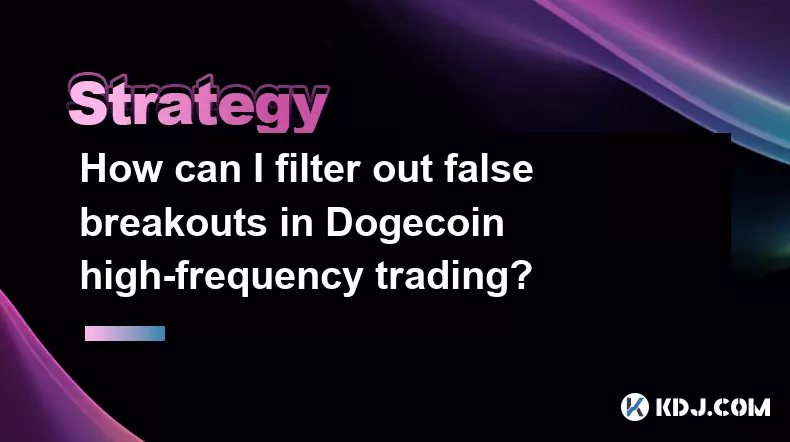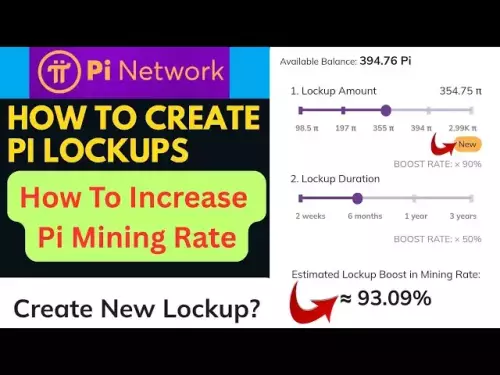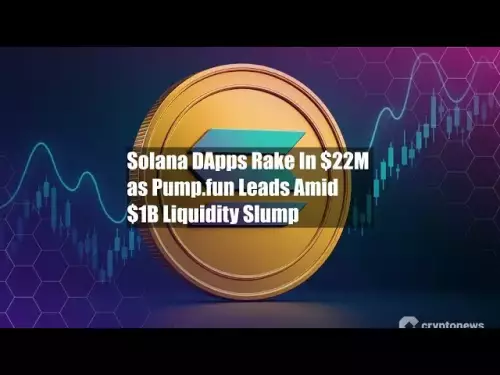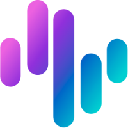-
 bitcoin
bitcoin $114779.865156 USD
2.30% -
 ethereum
ethereum $4226.519789 USD
2.39% -
 tether
tether $1.000545 USD
0.04% -
 xrp
xrp $2.890223 USD
0.92% -
 bnb
bnb $1030.029301 USD
2.95% -
 solana
solana $212.824944 USD
1.69% -
 usd-coin
usd-coin $0.999757 USD
0.01% -
 dogecoin
dogecoin $0.234961 USD
-0.27% -
 tron
tron $0.337174 USD
0.42% -
 cardano
cardano $0.804783 USD
0.09% -
 hyperliquid
hyperliquid $45.748770 USD
-2.85% -
 chainlink
chainlink $21.699170 USD
0.82% -
 ethena-usde
ethena-usde $1.001452 USD
0.08% -
 avalanche
avalanche $30.237800 USD
1.14% -
 stellar
stellar $0.372604 USD
1.52%
Learn K-line Chart Analysis from Scratch: Chart Interpretation Methods in the Cryptocurrency Market
K-line charts, or Japanese candlesticks, help crypto traders analyze price action and market sentiment by displaying open, close, high, and low prices in set intervals.
Jun 15, 2025 at 05:49 pm

What Is a K-line Chart and Why It Matters in Cryptocurrency Trading
The K-line chart, also known as the Japanese candlestick chart, is one of the most essential tools used in technical analysis within the cryptocurrency market. Each K-line represents a specific time period — such as 1 minute, 5 minutes, or even 1 day — and shows the opening, closing, high, and low prices during that interval. In crypto trading, where price volatility is common, understanding K-line patterns can help traders make informed decisions.
Unlike simple line charts, K-lines provide more depth by showing not only the price movement but also the emotional sentiment behind it — whether buyers (bulls) or sellers (bears) are in control. This makes K-line chart analysis especially valuable for short-term traders and long-term investors alike.
Understanding how to read these candlesticks correctly allows traders to identify potential reversals, continuations, and consolidation phases in the market.
Basic Components of a K-line Candlestick
Each K-line consists of four main components: the open price, the close price, the high price, and the low price. The body of the candle is formed between the open and close. If the close price is higher than the open, the candle is typically green or hollow, indicating a bullish trend. Conversely, if the close price is lower than the open, the candle is usually red or filled, signaling a bearish trend.
The thin lines above and below the body are called wicks or shadows, representing the highest and lowest prices reached during that time frame. A long upper wick indicates strong selling pressure after a rally, while a long lower wick suggests strong buying interest after a dip.
- Green (Bullish) candle = Close > Open
- Red (Bearish) candle = Close
- Long upper wick = Rejection at highs
- Long lower wick = Rejection at lows
The length and position of the wicks relative to the body are crucial in interpreting the strength of bulls or bears during a given period.
Common K-line Patterns in Crypto Markets
Recognizing recurring K-line patterns helps traders anticipate future price movements. Some of the most commonly observed patterns include:
- Doji: Indicates indecision between buyers and sellers when the open and close prices are nearly equal.
- Bullish Engulfing: A large green candle completely engulfs the previous red candle, suggesting a potential reversal to the upside.
- Bearish Engulfing: A large red candle swallows the prior green candle, signaling a possible downward trend.
- Harami: A small candle appears inside the range of the previous larger candle, often seen before a trend change.
- Hammer: A candle with a long lower wick and small body at the top, indicating a potential bottom reversal.
These patterns become more reliable when they occur near key support or resistance levels or when confirmed by volume spikes.
How to Interpret K-line Charts on Crypto Exchanges
Most major cryptocurrency exchanges, including Binance, Coinbase, and Kraken, offer built-in charting tools with customizable K-line intervals. To interpret them effectively:
- Select the correct time frame based on your trading strategy — intraday traders might use 1-minute or 5-minute charts, while swing traders may prefer 4-hour or daily charts.
- Zoom in or out to observe how recent K-line patterns fit into broader trends.
- Overlay basic indicators like moving averages or RSI to confirm signals from candlestick formations.
- Use horizontal lines to mark significant support and resistance zones where certain K-line patterns have historically triggered reversals.
It's important to avoid overloading the chart with too many indicators, which can lead to confusion and delayed decision-making.
Combining K-line Analysis with Volume and Other Indicators
While K-line charts provide valuable insight into price action, they should not be used in isolation. Volume plays a critical role in confirming the validity of any pattern. For instance, a bullish engulfing pattern backed by a sudden spike in volume is more likely to result in an actual uptrend compared to one with weak volume.
Additionally, combining K-line analysis with other tools such as:
- Moving Averages: Help smooth out price fluctuations and show the direction of the trend.
- Relative Strength Index (RSI): Helps identify overbought or oversold conditions that may precede a reversal.
- Fibonacci Retracement Levels: Provide dynamic support and resistance zones where K-line patterns may form meaningful signals.
Using multiple layers of confirmation increases the probability of making accurate predictions in fast-moving crypto markets.
Frequently Asked Questions (FAQs)
Q1: Can K-line chart analysis work for all cryptocurrencies?Yes, K-line chart analysis applies universally across all tradable assets, including Bitcoin, Ethereum, altcoins, and stablecoins. However, liquidity and volatility differences may affect the reliability of certain patterns.
Q2: Should beginners rely solely on K-line patterns for trading?No. While K-line patterns are powerful, beginners should combine them with other tools like volume analysis and trendlines to build a robust trading strategy.
Q3: How do I practice reading K-line charts effectively?You can use demo accounts or paper trading features on platforms like Binance or TradingView to practice identifying and acting on K-line patterns without risking real money.
Q4: Are there automated tools to detect K-line patterns?Yes, platforms like TradingView offer customizable scripts and alerts that can automatically detect and notify you of popular K-line patterns forming on your selected assets.
Disclaimer:info@kdj.com
The information provided is not trading advice. kdj.com does not assume any responsibility for any investments made based on the information provided in this article. Cryptocurrencies are highly volatile and it is highly recommended that you invest with caution after thorough research!
If you believe that the content used on this website infringes your copyright, please contact us immediately (info@kdj.com) and we will delete it promptly.
- ChatGPT, Bitcoin, and $HYPER: Riding the Crypto Wave
- 2025-09-30 16:25:14
- Mutuum Finance (MUTM): Riding the DeFi Wave with Crypto Price Prediction
- 2025-09-30 16:25:14
- XRP ETF Approval Odds Soar: Analyst Predicts $33 Price Surge!
- 2025-09-30 16:30:01
- Keel, Solana, and Sky Stablecoin: Fueling the Future of DeFi
- 2025-09-30 16:45:13
- EcoChain, DePIN Infrastructure, and X1Nodes: Powering the Web4 Revolution
- 2025-09-30 16:30:01
- Pi Network's Institutional Momentum: Leading the Web3 Revolution
- 2025-09-30 16:45:13
Related knowledge

Practical parameter settings for a Bitcoin multi-timeframe moving average system
Sep 18,2025 at 10:54pm
Optimizing Timeframe Combinations for Bitcoin Trading1. Selecting appropriate timeframes is crucial when building a multi-timeframe moving average sys...

How can I filter out false breakouts in Dogecoin high-frequency trading?
Sep 22,2025 at 01:00am
Understanding False Breakouts in Dogecoin Trading1. A false breakout occurs when Dogecoin's price appears to move beyond a defined support or resistan...

Techniques for identifying tops and bottoms in the Bitcoin on-chain NVT model
Sep 20,2025 at 07:54pm
Understanding the NVT Model in Bitcoin Analysis1. The Network Value to Transactions (NVT) ratio is often described as the 'P/E ratio' of the cryptocur...

What does the surge in open interest in Bitcoincoin futures mean?
Sep 20,2025 at 11:18pm
Understanding the Surge in Dogecoin Futures Open Interest1. A surge in open interest within Dogecoin futures indicates a growing number of active cont...

How can I use the Ethereum USDT premium to gauge market sentiment?
Sep 18,2025 at 11:55pm
Understanding the Ethereum USDT Premium1. The Ethereum USDT premium refers to the price difference between USDT (Tether) traded on Ethereum-based plat...

What should I do if Ethereum staking yields decline?
Sep 20,2025 at 06:18am
Understanding the Causes Behind Declining Ethereum Staking Yields1. The Ethereum network transitioned to a proof-of-stake consensus mechanism with the...

Practical parameter settings for a Bitcoin multi-timeframe moving average system
Sep 18,2025 at 10:54pm
Optimizing Timeframe Combinations for Bitcoin Trading1. Selecting appropriate timeframes is crucial when building a multi-timeframe moving average sys...

How can I filter out false breakouts in Dogecoin high-frequency trading?
Sep 22,2025 at 01:00am
Understanding False Breakouts in Dogecoin Trading1. A false breakout occurs when Dogecoin's price appears to move beyond a defined support or resistan...

Techniques for identifying tops and bottoms in the Bitcoin on-chain NVT model
Sep 20,2025 at 07:54pm
Understanding the NVT Model in Bitcoin Analysis1. The Network Value to Transactions (NVT) ratio is often described as the 'P/E ratio' of the cryptocur...

What does the surge in open interest in Bitcoincoin futures mean?
Sep 20,2025 at 11:18pm
Understanding the Surge in Dogecoin Futures Open Interest1. A surge in open interest within Dogecoin futures indicates a growing number of active cont...

How can I use the Ethereum USDT premium to gauge market sentiment?
Sep 18,2025 at 11:55pm
Understanding the Ethereum USDT Premium1. The Ethereum USDT premium refers to the price difference between USDT (Tether) traded on Ethereum-based plat...

What should I do if Ethereum staking yields decline?
Sep 20,2025 at 06:18am
Understanding the Causes Behind Declining Ethereum Staking Yields1. The Ethereum network transitioned to a proof-of-stake consensus mechanism with the...
See all articles










































































